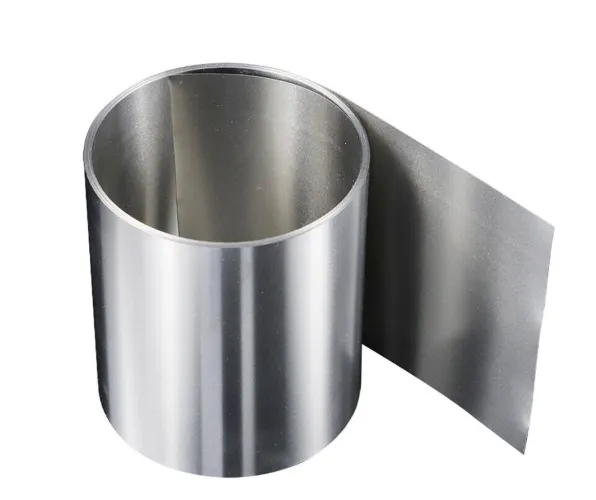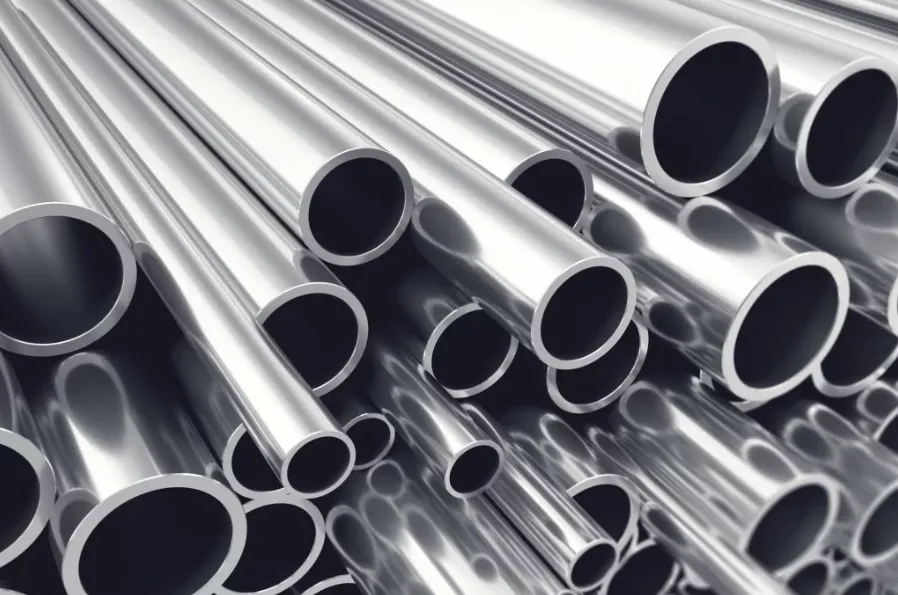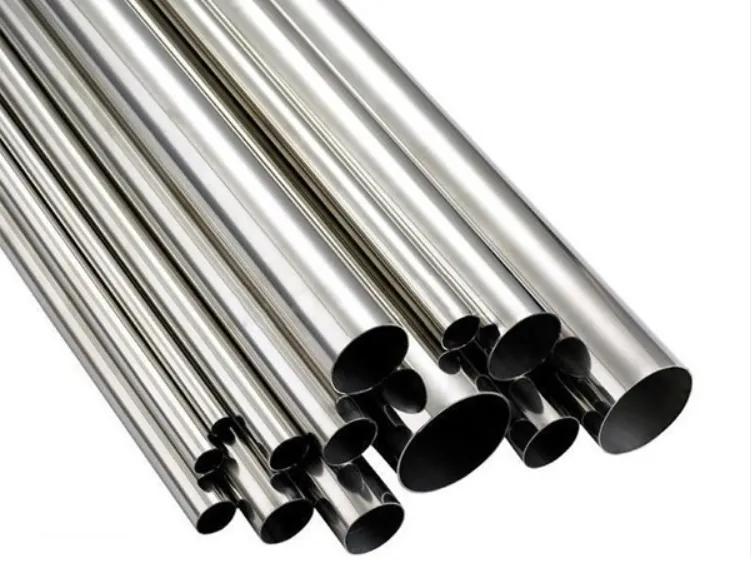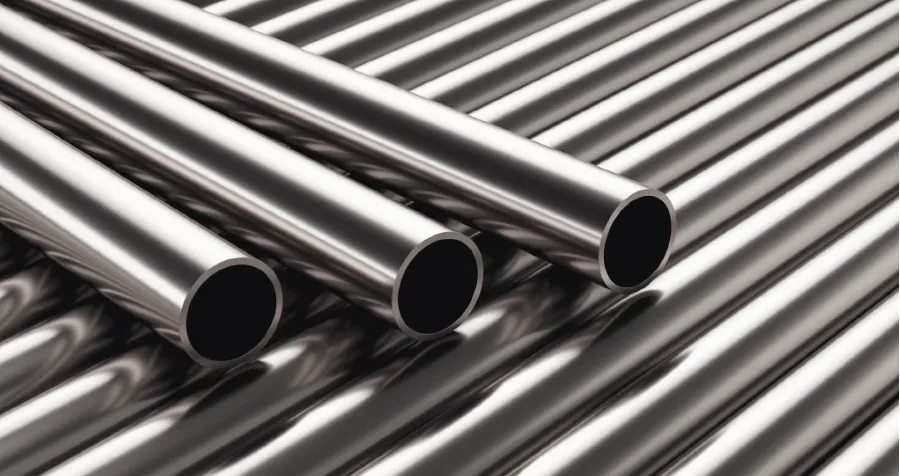Stainless steels are an essential category of corrosion-resistant alloys defined by a minimum chromium content of 10.5 wt%. This chromium content forms a passive oxide layer on the surface, enhancing the material’s durability in challenging environments. As of 2022, the global stainless steel market was valued at approximately $111.4 billion, encompassing over 150 standardized grades categorized into five primary families. Each family exhibits unique metallurgical properties and performance metrics.
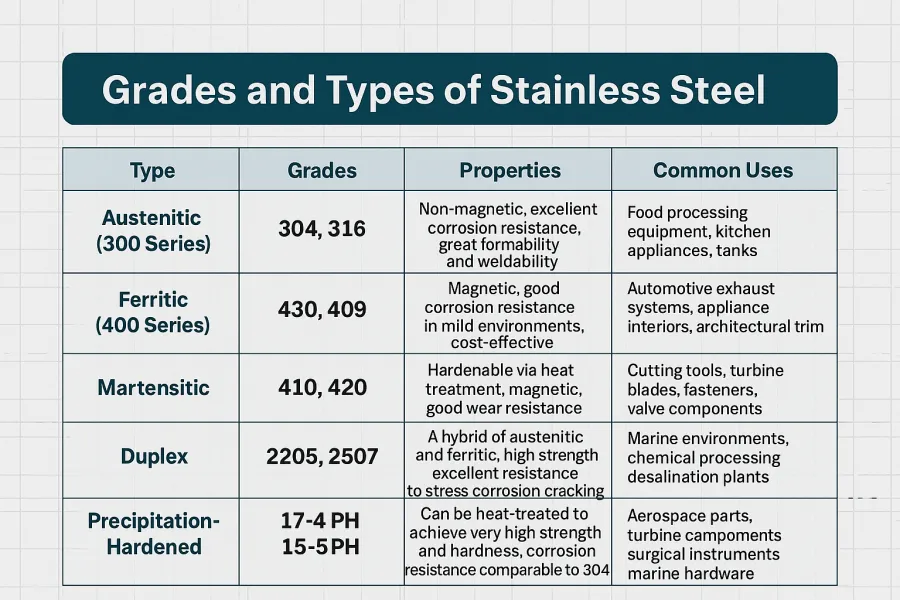
1. Austenitic Stainless Steels (300 Series)
Austenitic stainless steels account for about 60% of stainless steel production worldwide. These grades have a face-centered cubic (FCC) structure that is stabilized by nickel (8-12%) and sometimes nitrogen. Key grades include:
- 304 (1.4301): This is the most widely used austenitic grade, constituting about 50% of the austenitic market. It contains 18% chromium and 8% nickel, showing an ultimate tensile strength (UTS) between 515-620 MPa and an elongation of 40-60%. Common applications include food processing equipment and architectural features.
- 316L (1.4404): This grade includes 2-3% molybdenum, which enhances its resistance to pitting. Its UTS ranges from 485-620 MPa and shows improved crevice corrosion resistance, especially in chloride environments, with critical temperatures 15-20°C higher than 304.
- 904L (1.4539): A high-alloy grade with 20% chromium, 25% nickel, and 4.5% molybdenum. It offers exceptional resistance to sulfuric acid with a pitting resistance equivalent (PREN) greater than 35.
Recent innovations include lean duplex 304D (1.4362), which achieves 30% higher yield strength (450 MPa) compared to standard 304, thanks to controlled nitrogen additions while retaining similar corrosion resistance.
2. Ferritic Stainless Steels (400 Series)
Ferritic stainless steels have a body-centered cubic (BCC) structure and are more cost-effective, with chromium levels ranging from 10.5-30% but generally lacking nickel:
- 430 (1.4016): A basic grade containing 16-18% chromium, it has a UTS of around 450 MPa. It’s primarily used in automotive trim and home appliances.
- 444 (1.4521): This advanced ferritic grade contains 18% chromium and 2% molybdenum, demonstrating a PREN of 24 and outperforming 316L in resisting chloride stress corrosion cracking at temperatures below 60°C.
Modern stabilized grades like 439 (1.4510) use titanium and niobium to prevent sensitization during welding, making them suitable for exhaust systems and continuous service at up to 800°C.
3. Martensitic Stainless Steels
These are heat-treatable alloys that can reach hardness levels of up to 58 HRC:
- 410 (1.4006): A 12% chromium alloy with a tempered UTS that ranges from 760-1030 MPa, typically used for cutlery and turbine blades.
- 440C (1.4125): A high-carbon variant (1.0% carbon) that can reach 60 HRC after hardening, often used in bearing manufacturing.
Precipitation-hardening grades like 17-4PH (1.4542) combine martensitic properties with copper and niobium precipitates, achieving a UTS of 1310 MPa while maintaining good corrosion resistance akin to 304.
4. Duplex Stainless Steels
These alloys are a mix of austenite and ferrite, featuring balanced microstructures:
- 2205 (1.4462): This standard duplex steel consists of 22% chromium, 5% nickel, and 3% molybdenum, exhibiting a PREN between 35-40 and yield strength significantly higher than 316L (around 550 MPa).
- 2507 (1.4410): A super duplex variant containing 25% chromium and 7% nickel, it achieves a PREN over 40 and a UTS of around 800 MPa, suitable for offshore oil and gas applications.
The latest innovations include hyper-duplex UNS S32707, which shows a PREN greater than 45 and maintains toughness down to -60°C for Arctic conditions.
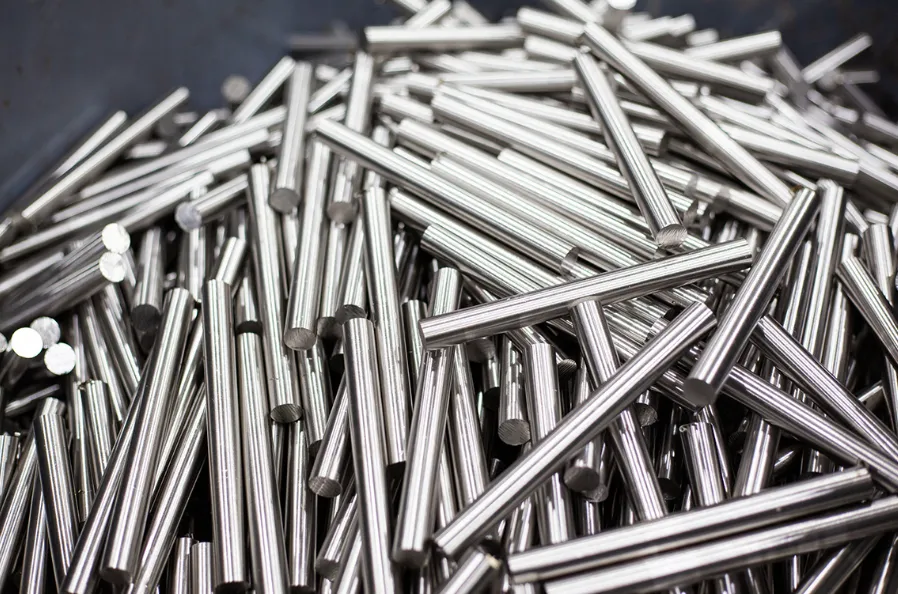
5. Precipitation-Hardening Grades
- 15-5PH (1.4545): This grade can reach a UTS of 1380 MPa after H900 treatment while retaining about 30% elongation.
- Custom 465 (AMS 5938): An aerospace-grade alloy that can achieve a UTS of 1655 MPa and shows excellent resistance to stress corrosion cracking.
Emerging Developments
- Additive manufacturing alloys: Gas-atomized 316L powders with over 99% density can achieve a UTS of around 700 MPa using laser powder bed fusion (LPBF) processes.
- High-entropy alloys: Variants like FeCrCoNiMn are showing double the corrosion resistance of 316L in simulated seawater conditions.
- Nanostructured grades: Techniques involving severe plastic deformation can produce 304 stainless steel with a UTS of 1.2 GPa while retaining 15% ductility.
Global standards such as ASTM A240, EN 10088-1, and JIS G4303 govern the compositional tolerances and mechanical properties of stainless steels, ensuring uniformity across various industries, from chemical processing (which often requires a PREN greater than 40) to biomedical applications (where ISO 5832-1 compliant 316LVM is used). The annual global production of stainless steel exceeds 56 million metric tons, with continuous advancements aimed at meeting the stringent requirements of sectors such as energy, transportation, and construction.

